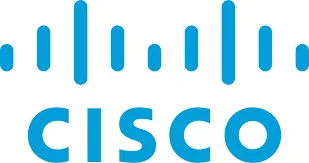
Cisco Virtual Topology System is an open software-overlay management system that automates data center network fabric provisioning for virtual and physical infrastructure
Vendor
Cisco Systems
Company Website
The Cisco Virtual Topology System (VTS) is a comprehensive software-overlay management and provisioning system designed to automate data center network fabric provisioning for both virtual and physical infrastructure. This standards-based, open system is particularly beneficial for service providers and enterprise operations teams seeking to streamline the management and automation of their data center overlay networks.
Key Features and Capabilities
Fabric Automation VTS offers advanced fabric automation capabilities, enabling seamless provisioning and management of network resources across the data center.
Open Standards Compliance The system adheres to open standards, ensuring compatibility and interoperability with various network components and technologies.Investment Protection VTS extends the benefits of programmability, automation, and operational simplicity to the entire Cisco Nexus switching family, safeguarding existing investments in network infrastructure.
Accelerated Network Provisioning By implementing an automated provisioning approach consistently across both virtual and physical workloads, VTS significantly reduces the time required for application delivery.
Seamless Integration VTS provides transparent integration with existing multivendor infrastructure and operational systems, including popular platforms like OpenStack and vCenter.
Enhanced Resource Utilization The system enables the creation of a flexible resource pool, which leads to improved return on investment and reduced capital expenditures.
Scalability Leveraging an open standards-based BGP-EVPN control plane and dynamic topology, VTS enhances VXLAN scalability, thereby extending workload placement and mobility capabilities.
Service Level Agreement (SLA) Support VTS incorporates the industry's high-performance virtual forwarder, built on the innovative Cisco Vector Packet Path (VPP) software-forwarding engine and Intel Data Path Development Kit (DPDK). This feature allows for service scaling without compromising application performance, making it particularly suitable for service providers with stringent SLA requirements.
System Overview The Cisco Virtual Topology System is engineered to simplify data center operations and enhance the agility of multitenant cloud environments. It achieves this by automating the provisioning process for data center overlay networks, reducing complexity, and improving overall network management efficiency.
Target Applications
- VTS is particularly well-suited for organizations aiming to:Reduce the complexity of their data center operations
- Enhance the agility of their multitenant cloud environments
- Automate network fabric provisioning across both virtual and physical infrastructure
- Improve resource utilization and return on investment
- Scale services without compromising application performance
Technology Foundation
- The system builds upon several key technologies:Software-defined networking (SDN) principles
- Network virtualization
- BGP-EVPN control plane
- VXLAN (Virtual Extensible LAN) for network overlay
- Cisco Vector Packet Path (VPP) software-forwarding engine
- Intel Data Path Development Kit (DPDK)
By leveraging these technologies, VTS provides a robust, scalable, and flexible solution for modern data center network management and automation.